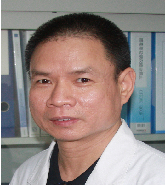Keynote Forum
Jinping Zheng
First Affiliated Hospital of Guangzhou Medical University, China
Keynote: Early Management of Chronic Obstructive Pulmonary Disease
Time : 10:00-10:40

Biography:
Jinping Zheng is a Professor of Respiratory Medicine in First Affiliated Hospital of Guangzhou Medical University, Executive Director of Clinical Research Center for Respiratory Disease, Director of Pulmonary Function and Clinical Physiology of Chinese Society of Chest Physician, Vice-director of the Respiratory Therapy Committee of the Chinese Thoracic Society, Chairman of China Union for Pulmonary Function Testing, and Director of Guangzhou Respiratory Society.
Abstract:
Prevalence of COPD increased by 67% from 2004 to 2015 in China (13.7% in >40 years population). [1, 2] Among patients population >92% were characterized as stage I & II, which are always neglected by physicians and patients.
By using Endobronchial Optical Coherence Tomography and exercise test, those patients present with apparent small air way remodeling and less exercise tolerance. [3] The earlier the staging, the faster the annual declining of FEV1. [4] Patients may not present with dyspnea (even exercise dyspnea) until their FEV1 dropped to ≤50% predicted. Early intervention may ameliorate disease progression. Community based integrated intervention (medical education, smoking cessation, improved air pollution and short cause SAMA) significantly reduced the incidence of COPD and annual decline of FEV1.[5] In a two-years “Tie-COPD” study, we have firstly demonstrated that regular use of inhaled Tiotropium (18 µg qd two yrs )significantly improved trough FEV1 (127-169ml), FVC (116-164ml), annual post bronchodilator FEV1 decline rate, CAT score, CCQ score and exacerbation rate in stage I to II patients, even in the subgroup with CAT <10 [6], suggesting an active intervention of stage I to II COPD may greatly improve lung function and reverse (or partly reverse) disease progression.
We suppose that the strategy of the management of COPD may move to the upstream of the disease, which may alleviate the progression of COPD ,similar to the management of early stage of hypertension or diabetes .







